Pearls: what kind of stone is it and where is it mined, properties and types
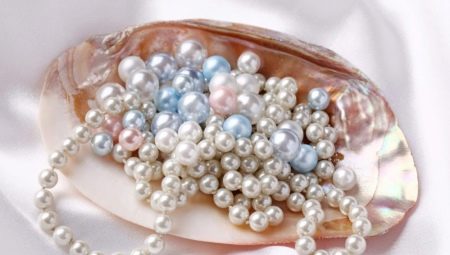
What woman has never tried on a pearl necklace or earrings? The sparkle of this stone is mesmerizing, its radiance makes the eyes of the one who wears it shine. But what is the appeal of pearls and why is it so interesting? Let's try to understand.

What it is?
Pearl is a gem of animal origin. He is the only one in the world. Its formation does not take place in the depths of the earth, as, for example, in rubies or sapphires, and in the shells of bivalve molluscs.
The ancient Greeks assured that the tears of mermaids turn into pearls, hardening, and in medieval people they believed that angels hide the tears of those whom they offended without guilt in shells, and then they become pearls.
Of course, the explanation for the origin of pearls is much more prosaic - this is how a mollusk, whose home is a shell, protects itself. The pearl begins to form when a foreign body appears inside the shell, which begins to irritate the delicate flesh of the mollusk. He is not able to throw it "overboard", so he starts enveloping it with mother-of-pearl, covering it in layers, just as if he were forming his own shell.
Mother-of-pearl is what the mantle of the mollusk produces, the substance that makes up the shell inside.


What does it consist of?
In another way, organic pearls are called wild. It consists of an embryo - it can be a grain of sand, the smallest insect or an air bubble, a drop of water, and numerous nacreous layers. Once the carbonate ball is formed, the frictional force is reduced.
The shape that a pearl acquires during the growth process is associated with the location of its embryo. Perfectly round pearls are formed in the mantle region of the clam.And if the embryo is close to the surface of the shell, such a pearl will grow together with the shell's mother-of-pearl layer and acquire an irregular shape. Such pearls are called blisters. If the embryo gets into the muscle of the mollusk or the area next to it, the shape of the pearl can turn out to be very peculiar.


Molluscs, united in groups that have the ability to form pearls, are called pearl mussels. They are divided into marine and river (freshwater) varieties.
River pearls are more common and cheaper than sea pearls. It is easier to get, since up to 20 pearls can grow in freshwater pearls at the same time. However, it should be noted that river pearls are smaller, less shiny and not as perfectly round as sea pearls. But on the other hand, they are much more durable and less prone to abrasion. In the world, mainly freshwater pearls are mined.
The highest quality pearls are supplied by marine molluscs, pinctads and pteria. They are located in the depths of the sea as whole settlements with a high density. They are called "banks".
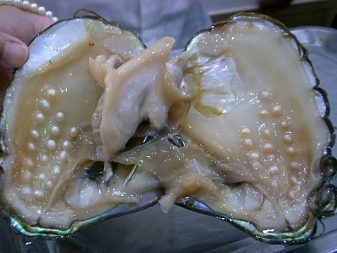

How is it mined?
Initially, pearls were mined with the help of divers. This is an ancient and extremely dangerous profession, it is more than 4 thousand years old. The diver dived under water about 20 meters, having only a knife with him, and had to stay there for a minute or one and a half, collect as many shells as he could. And the most important thing - he had to make at least 30 such dives a day! Let's not forget about the sharks that trapped the desperate pearl hunters in the sea.
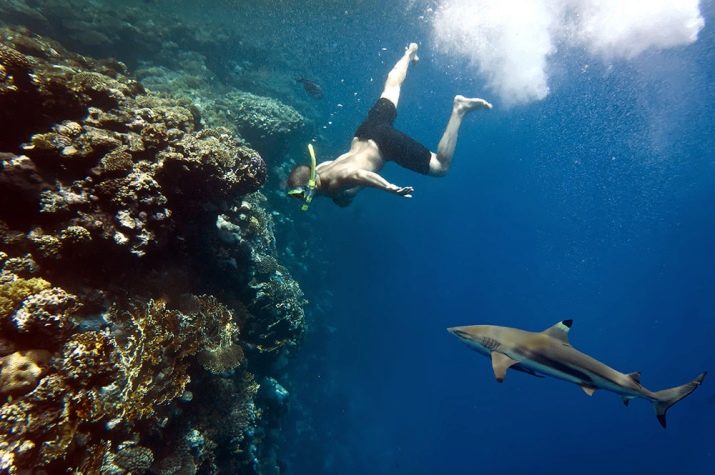
The Burmese pearls are known, which have been mined in the Persian Gulf for a long time. It was worn by nobles, including Russians. It was considered expensive and of very high quality.
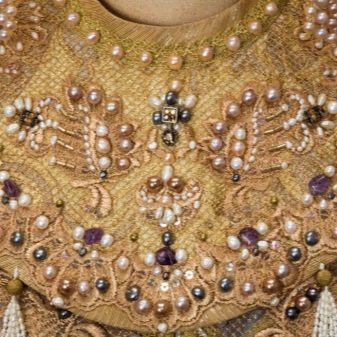

Having learned about how pearls are formed in nature, people learned to grow them artificially. The first such attempts date back to the 13th century. In China, they began to try to grow pearls in oysters, opening them with bamboo sticks, placing copper, lead or wood particles in the shell. Then the oyster was closed and returned to the depths of the sea. The finished pearls were collected after 3-4 years.
At the beginning of the 20th century, this method was patented by the Japanese, in particular by Kokichi Mikimoto. They are still the leaders in the world cultivation of cultured pearls. This is despite the aftermath of the disastrous tsunami in 2011, which destroyed the vast majority of pearl farms. For a short time, China seized the world leadership in this industry, but Japanese industry quickly recovered.
In addition, the Chinese water area does not allow the cultivation of pearls with a diameter of more than 7 mm. A diameter of 8 mm and more increases its price several times. So Japan continues to hold the lead in the production of the largest pearls.
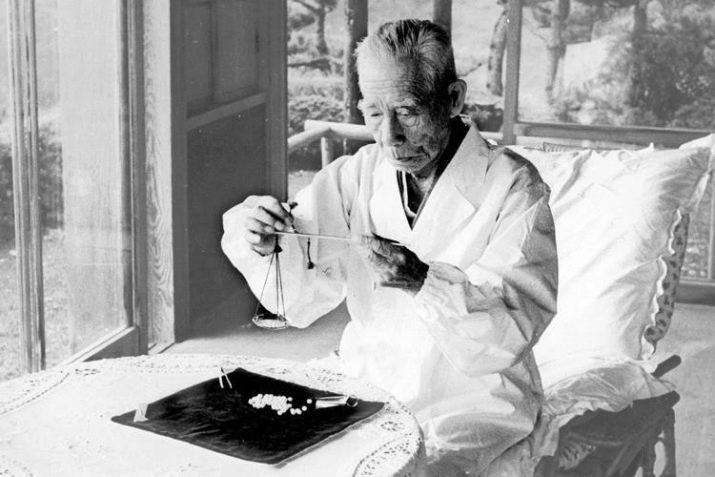

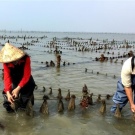
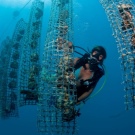
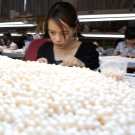

How does this happen? They take an oyster, gently open its flaps a little, place a "foundling" there, it can be a tiny glass ball or beads. After that, the shell is placed in a reservoir in which optimal conditions for the life of the mollusk are created. It takes about 3 years to grow one good sea pearl, and a river pearl - 2 years.
Such pearls are called cultivated. 90% of the pearls from which jewelry is made are cultured. Its properties are absolutely the same as that of the wild one, but the cost is much lower. However, you should be aware that cultured pearls contain a large number of defective specimens. The main suppliers of this type of pearls are Japan and China. Australian and Polynesian cultured pearls are also highly regarded.
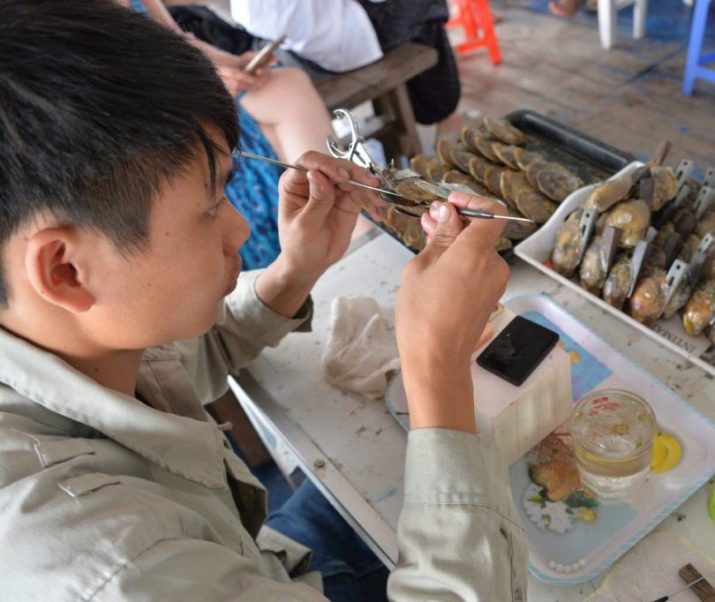
Views
There are much more types of pearls than just river and sea pearls. Let's dwell on the most popular ones.
Tahiti pearls are formed by large black-lipped oysters Pinctada margaritifera. This species is the only natural one existing in the world, the rest are dyed.Tahitian pearls grow faster than others, but perfectly round pearls are produced by very few shellfish. Each of the Tahitian black pearls has a unique shape, so making jewelry out of them is not easy.
To "fit" one to the other, you have to sort out a huge number of pearls. In addition to differences in shape, they are colored differently - they have a blue tint, eggplant, olive, blue and even dark red, wine. The most expensive colors are cobalt and blue-green "peacock" - peacock. It takes years to assemble a necklace from Tahitian pearls, because you need to choose both the shape and the color of the pearls perfectly. Accordingly, the price for such a decoration is astronomical.
The name "Tahiti" does not mean at all that it is only there that it is mined. It is not mined there, Tahiti is only a trade center for this type of industry. And the spread of pearl farms is throughout Polynesia: the Gambier Islands, Micronesia.
Tahiti pearls were cultivated much later than all other types - in the 1960s.

Pearls "Baroque" can be of different - and wild origin, and cultivated. The difference in the species is in the whimsical forms taken by the pearls. As for the colors, the "baroque" comes in different colors, in addition, they have different tints. Although pearls of perfectly round shape are considered the most valuable, the price of "baroque" can be high.
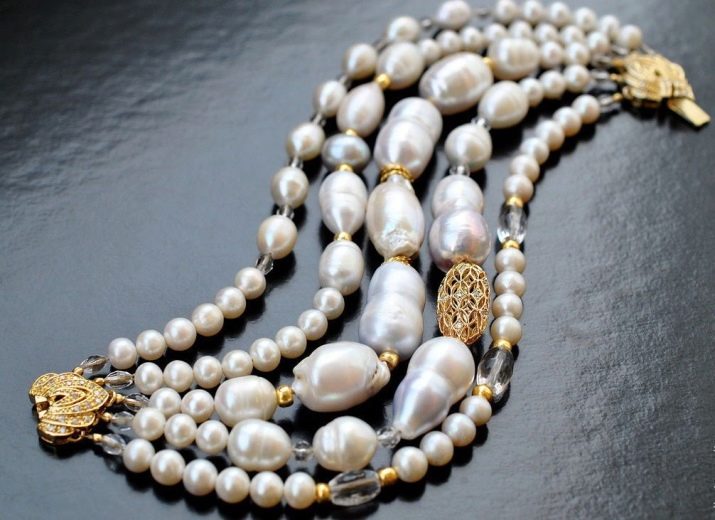
Pearls of the South Seas are a type of cultured pearl considered the most noble and beautiful. It is produced by the very large marine clams Pinctada maxima, which can weigh up to 5 kg. Perfectly round pearls are very rare. Now all the pearls grown with the Pinctada maxima are called "South Sea pearls", mainly in Australian, Indonesian and Philippine waters. In diameter, pearls reach 10-20 mm, being the most expensive of the cultivated ones.
The color gamut ranges from white to gold and orange, as well as blues and shades of black. Dark pearls shine more intensely than light ones. Gold is the most spectacular and expensive. Pearls of the South Seas are covered with a very thick nacre layer - about 6 mm.

Let's dwell on freshwater pearls. Its average size is 4-6 mm, rarely more than 9-10 mm, these are usually cultivated specimens that are very expensive. For the cultivation of river pearls, a very small kernel is used, therefore the layer of its mother-of-pearl on it is much thicker, and the luster, accordingly, is stronger.
The most developed cultivation of freshwater pearls in the waters of China. For this, two types of molluscs are used: Hyriopsis cumingii - the "producer" of pearls of various shades, and Cristaria plicata - is responsible for the creation of white, cream and pink specimens. They have a very different shape - from an oval to a drop.
Round and large specimens are very rare.
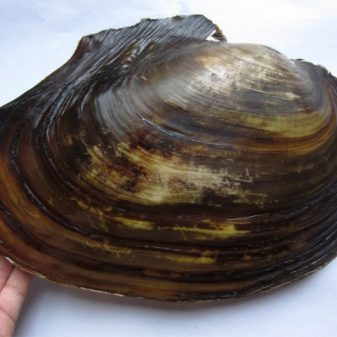
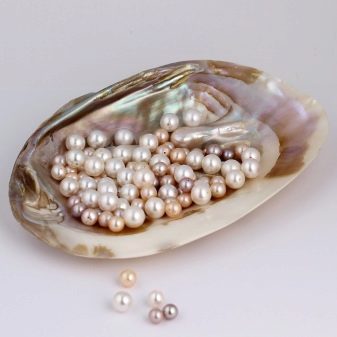
Pearl Akoya produced by appropriately named oysters. Pearls are most often spherical in shape and in a wide variety of shades: white, cream, pink, silver, pale yellow and greenish black. The diameter range is 5-9 mm, larger stones are rare and very expensive. This type of pearl is produced in Japan on the islands of Honshu and Kyushu.
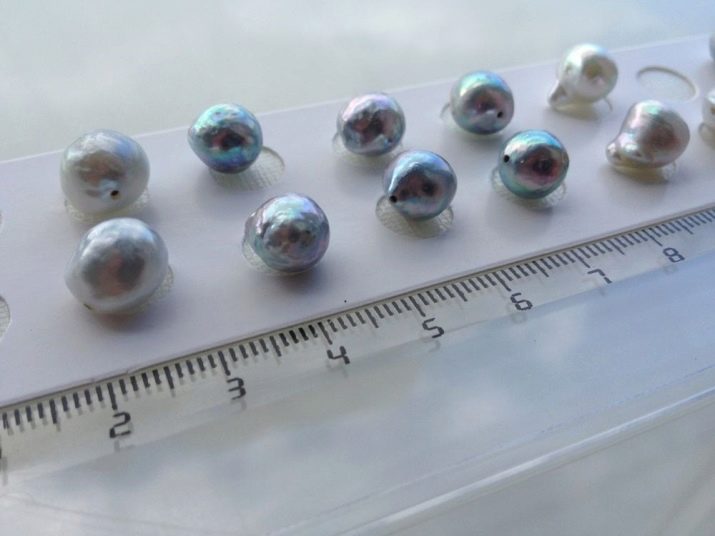
Pearl "Caches" formed when marine or freshwater molluscs reject the implanted implant. There is no nucleus in such a pearl; nevertheless, mother-of-pearl grows onto very small particles in the shell, as in all other cases, in layers. These specimens are also considered natural. Keshi is more commonly found wild than cultivated. The keshi shape resembles flower petals and is used to create jewelry.
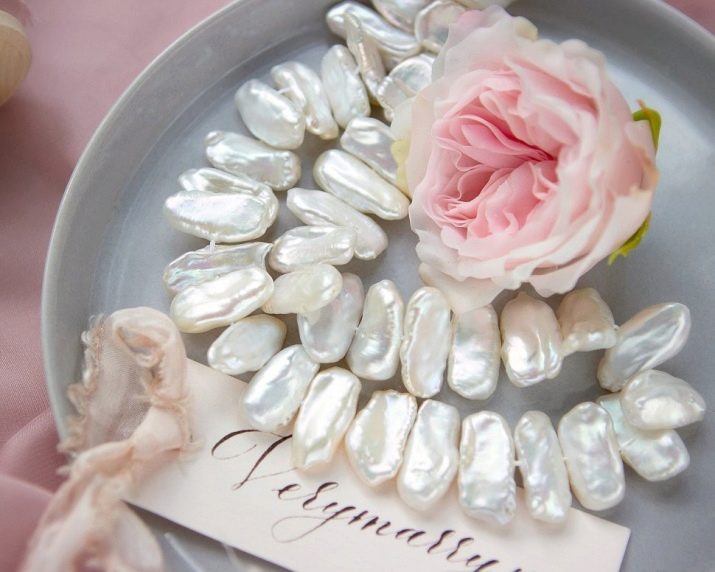
Hemispherical pearls are grown in China, Japan and America. The hemisphere shape is achieved due to the fact that the pearl is grown on a shell.Hemispherical pearls are in great demand in the jewelry industry; they are used for the design of rings, earrings, pendants and bracelets, where they are fastened with the flat side inward. This is an inexpensive type of pearl, but there are also expensive specimens of marine origin. This species is called mabe (mabe), the so-called "half pearl".
After a dome-shaped "half-pearl" has grown on the inner surface of the sink, it is cut with great accuracy, and epoxy is poured into the cut cavity. Mabe is not as durable as a regular pearl. As a rule, mabe have the correct geometric shape, large size, and also an unusual and very rich color range of delicate shades. The spectrum ranges from pale pink to bluish with a metallic sheen, and there are also silvery white and dark pearls.
Mabes shine and shimmer very brightly, which makes them stunningly beautiful in jewelry.
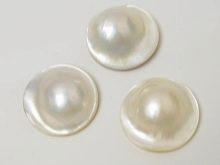

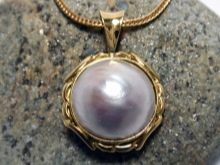
Artificial pearls are a mineral synthesized without the participation of a mollusk shell, but solely thanks to humans. Nacre for pearls is obtained directly from the shell. For the core, plastic or glass is used. There are many technologies for the production of synthetic pearls.
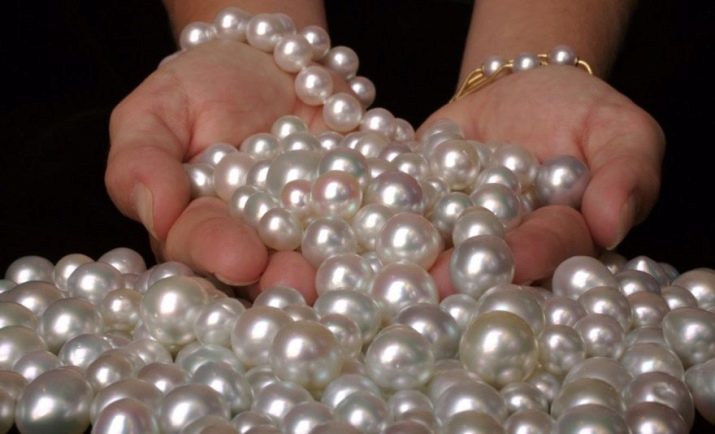
Properties
Mineralogy defines pearls as:
- having a pearlescent luster;
- white, pink, yellow, black;
- amorphous system;
- the Mohs scale determines the hardness by 4 points;
- density - 2.6-2.8 g / cm3;
- having a flaky break.
The structure of pearls is the same layered as that of mother-of-pearl. Because it is mother-of-pearl, only not on a flat, but on a spherical surface. Due to the fact that the proteinaceous tissues of mother-of-pearl slowly evaporate moisture, the pearl dries out over time, loses its luster, stratifies, turns yellow and eventually disintegrates.
Despite the pearl's shade, its composition is constant: the pearl consists of crystalline calcium carbonate and conchiolin.

Magical
The magical properties of pearls are that it brings financial well-being and a happy life. In some cultures, the fragility of this stone, on the contrary, is a symbol of tears and vain hopes. Also, pearls are a talisman against damage, evil eye, theft and deceitful people. They balance the course of life, correlate it with the cycle of the moon. There is a belief that this gem attracts good luck to strong-willed and spiritually rich people.
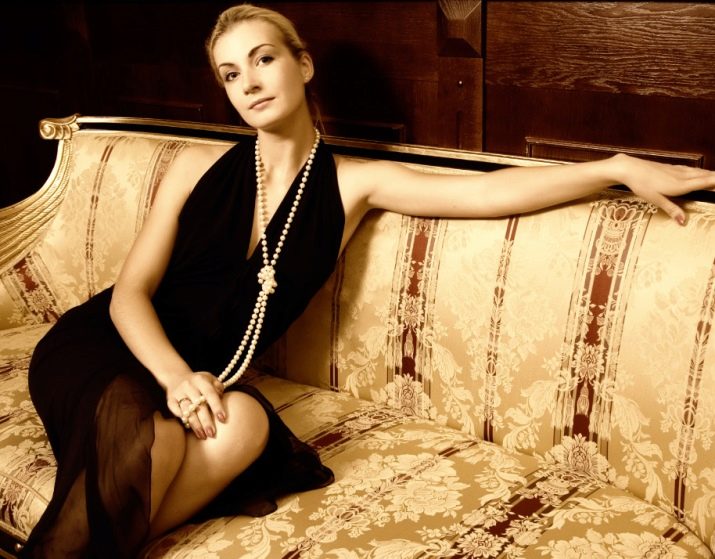
Therapeutic
The composition of this stone contains large amounts of organic calcium, and it is from it that the healing properties of pearls depend. It was used in different ways, but one way or another, the substances of which it consists must get into the body. For example, in Chinese medicine, rubbing pearls into powder and rubbing it into the skin is suggested.
The method of drinking acidified water is also common, in which pearls have been soaked for some time before. In dry wine, pearls dissolve completely after a certain period, and then the wine is saturated with all trace elements useful for humans.
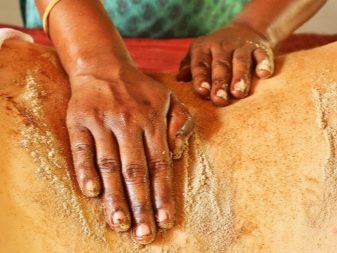
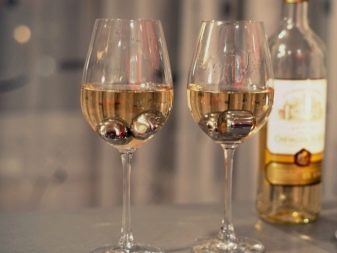
Pearls and turquoise are two stones that signal health problems. Turquoise starts to darken, and pearls grow dull and then become cloudy in appearance, which means that it is time for the owner to see a doctor. This is relevant only for those jewelry that a person wears constantly, as they are in contact with his body.
Tibetan pearl water is a drink that fights inflammation, bacteria, and stops bleeding. To prepare it, you just need to take a few pearls and place them in clean water, putting them in a cool place and closing the container. After 3-4 hours, the water is ready. It can treat gum disease, gallstones, and normalize the menstrual cycle.
Pearl water is very helpful for eye diseases - conjunctivitis, cataracts and others.
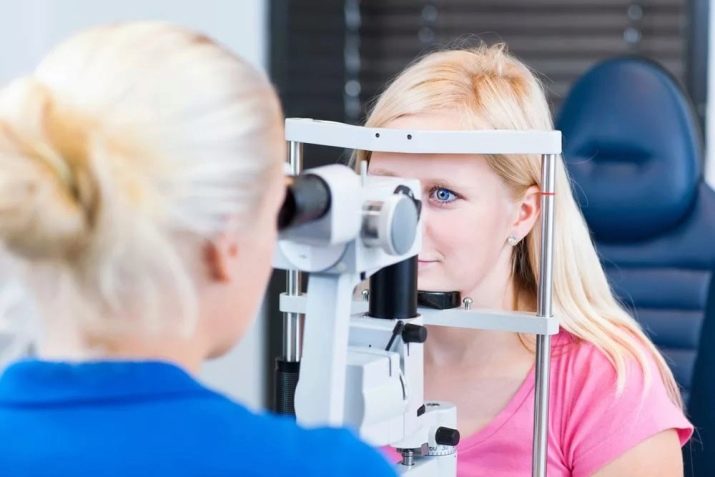
Who is it suitable for?
There is no woman who would not go for jewelry with pearls, but whether it will suit her is a question.It is a stone of great strength, but also of high sensitivity. It does not suit smug, pompous people, as well as those whose sensitivity is high even without pearls. Actors, athletes, travelers do not need to wear jewelry with pearls - there is a high likelihood of "imbalance" between physical and mental forces.

And ladies in business, or representatives of such professions as a judge, lawyer, prosecutor, tax inspector, are highly recommended to wear pearl jewelry more often. Business women will be able to conclude extremely successful deals for themselves, and “siloviki” will be able to make the right decisions, guided by both “body” and “spirit”.
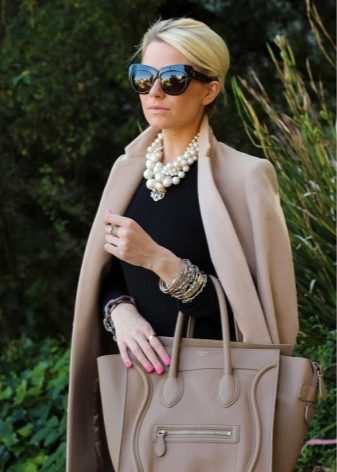

As for the color type, type of appearance, age and style - pearl products are so diverse that every woman can choose the right one for herself, no matter how old she is and what style she prefers.
Of the 12 signs of the zodiac, astrologers recommend wearing pearls to Cancers and Pisces. For a strong manifestation of the properties of a stone, it must be worn in several strands - both on beads and on bracelets.
The more honest and sincere a person is, the more objective and understanding he will become by wearing a pearl jewelry.
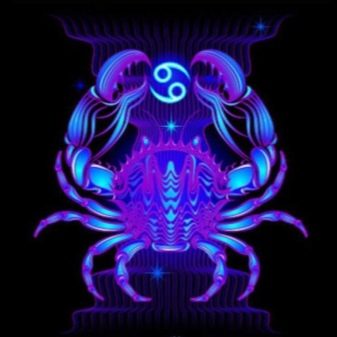

How to identify a fake?
The quality of fake pearls is often very high and the fake stones look like real ones. However, in most cases, it is quite possible to distinguish a fake from natural pearls even in appearance - shine, smoothness, the presence of external defects, everything will speak for themselves.
It is very easy to find out if the pearls are real in front of you. You need to throw pearls on a flat surface - a countertop, for example. Natural stones will bounce off the surface and jump, while artificial stones will roll.
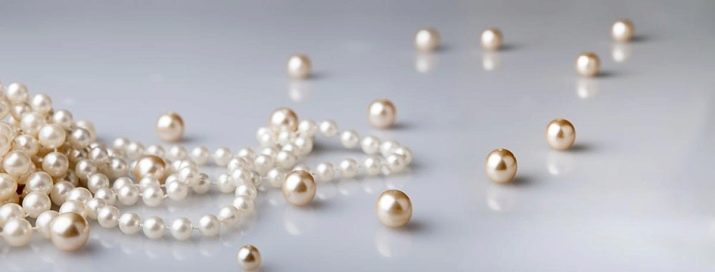
Also, connoisseurs try products "by the tooth". As a rule, fake jewelry has perfect smoothness, while real mother of pearl is rough because it is raw. Pearls do not need polishing or other processing.
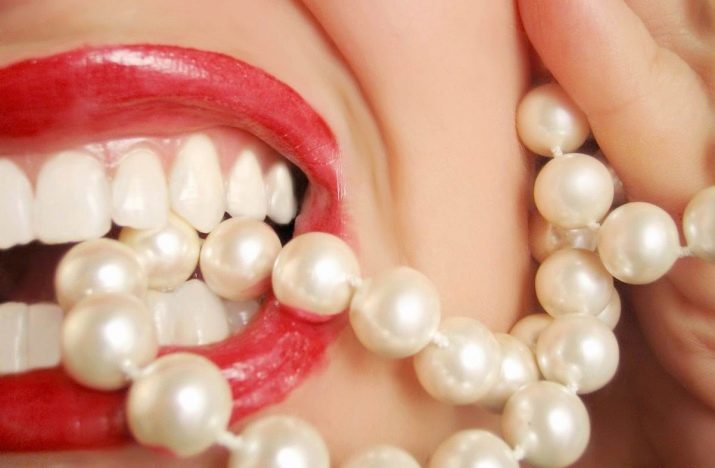
In order not to fall for the bait of scammers, buy pearl products where the probability of purchasing a fake is zero. For example, from a trip to Vietnam, bring Vietnamese pearls, and from Japan - Japanese cotton pearls.
That is, buy pearls in those countries where its extraction and cultivation is one of the leading industries.
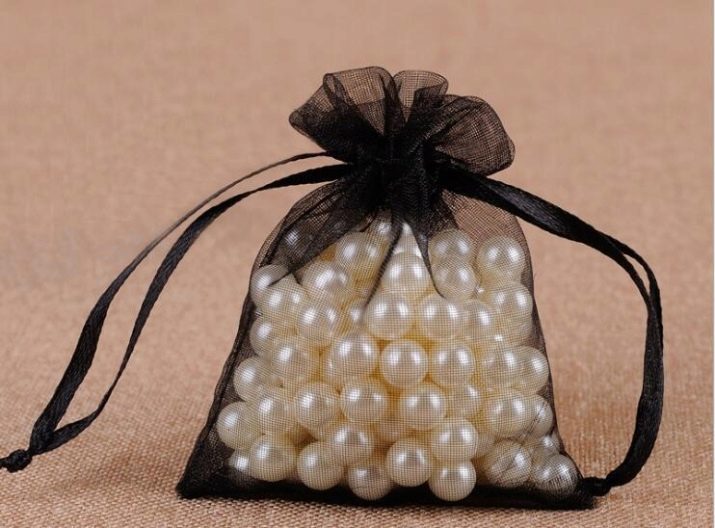
How to wear it correctly?
In everyday life, pearls must be worn very carefully so as not to add age to yourself, as this stone is very "age". If you are not wearing a floor-length evening dress and you are not going to a social reception, then you definitely don’t need a pearl set of earrings, a necklace and a bracelet.
On weekdays, it is best to wear several long pearl strands with a chanel-style tweed jacket, white shirt or blouse, and jeans. If you are not afraid to attract attention, choose a bracelet or beads made of very large pearls in several strands. Rings of unusual design with large pearls look great.

Subtleties of care
Pearls are organic in nature, so they tend to disintegrate faster than other precious stones. In a humid environment, it swells, and if the air is too dry, it crumbles and disintegrates. Pearls are not hard, yet they are durable. They tend to react to acids, make-up and cosmetics, hairspray, perfume.
Avoid getting all of the above on the stone, otherwise it will begin to lose its luster. To keep the pearl from aging, it is necessary rinse in water with dissolved sea salt. This must be done every six months.
Also, do not store pearl jewelry in direct sunlight. And the best way to keep a stone from aging is to wear it more often. Constant wearing of pearl jewelery prevents them from drying out and retains their shine.

For interesting facts about pearls, see the next video.








